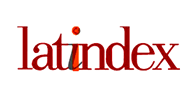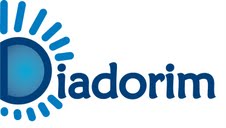FADIGA: ALTERAÇÕES FISIOLÓGICAS E MODELOS CONCEITUAIS
DOI:
https://doi.org/10.13037/rbcs.vol11n37.1815Keywords:
Fadiga. Modelos. Sistemas Fisiológicos. Governo centralAbstract
Fadiga pode ser considerada um fenômeno complexo, relacionado à diminuição de fatores motivacionais, redução na sustentação da força e sensação de exaustão. O objetivo dessa revisão foi descrever os dois principais modelos descritos acerca do tema fadiga: modelo de incapacidade dos sistemas fisiológicos e o do governo central. Ao longo de 13 meses nas principais bases de dados foram identificadas as pesquisados empregando as palavras fadiga, fadiga periférica, fadiga central, governo central e exercício em inglês e português. Foram utilizados para essa revisão 37 produções, dessas 19 eram estudos experimentais e 18 trabalhos outros. A incapacidade dos sistemas fisiológicos descreve que a fadiga é a quebra da homeostase tendo, como consequência final, a exaustão. De acordo com este modelo, a fadiga é proveniente da incapacidade dos sistemas fisiológicos de ordem central e periférica. A de ordem central caracteriza-se por alterações nas concentrações ou ações de aminoácidos de cadeia ramificada, dopamina, colina e acetilcolina, citocinas, amônia e carboidratos. Já a de ordem periférica por alterações nas concentrações de creatina-fosfato, glicogênio muscular e lactato – pH relacionado. O governo central descreve que a fadiga inicia-se sem comprovações de falhas correlacionadas à homeostase e o cérebro atua como um governo central com o intuito de garantir que o exercício seja finalizado. Conclui-se que o modelo da incapacidade dos sistemas fisiológicos analisa o corpo como um simples segmento e não como um sistema integrado no qual são realizadas complexas funções, sendo a principal de todas, a manutenção da homeostase.
Downloads
References
1. Davis J, Mark B, Stephen P. Possible mechanisms of
central nervous system fatigue during exercise. Basic
Sciences: Symposium: Exercise, Brain and Behaviour.
Med Sci Sports Exerc. 1997; 29:45-57.
2. Noakes TD, Gibson ASC, Lambert EV. From catastrophe
to complexity: a novel model of integrative central neural
regulation of effort and fatigue during exercise in humans:
summary and conclusions. Br J Sports Med. 2005; 39:120-24.
3. Garcia MC, Magalhaes J, Imbiriba LA. Comportamento
temporal da velocidade de condução de potenciais de ação
de unidades motoras sob condições de fadiga muscular.
Rev Bras Med Esporte. 2004; 10:299-303.
4. Santos MG, Dezan HV, Sarraf AT. Bases metabólicas
da fadiga muscular aguda. Rev Bras Cienc Mov. 2003;
11(1):07-12.
60
RBCS Artigos de Revisão
Revista Brasileira de Ciências da Saúde, ano 11, nº 37, jul/set 2013
5. Fernstrom JD, Fernstrom MH. Exercise, serum free
tryptophan, and central fatigue. J Nutr. 2006; 136:553S-9S.
6. Rogero MM, Tirapegui J. Aspectos atuais sobre
aminoácidos de cadeia ramificada e exercício físico. Rev
Bras Ciênc Farm. 2008; 44(4):13-23.
7. Tanaka H, West KA, Duncan GE Bassett DR, Changes
in plasma tryptophan/branched chain amino acid ratio in
response to training volume variation. Int J Sports Med.
1997; 18:270-75.
8. Bailey SP, Davis JM, Ahlborn EN. Effect of increased
brain serotonergic activity on endurance performance
in the rat. Acta Physiol Scand. 1992; 145:75-6.
9. Davis JM, Bailey SP, Woods JA, Galiano FJ, Hamilton
M, Bartoli WP. Effects of carbohydrate feedings on plasma
free-tryptophan and branched-chain amino acids during
prolonged cycling. Eur J Appl Physiol Occup Physiol.
1992; 65:513-19.
10. McConell G, Snow RJ, Proietto J, Hargreaves M.
Muscle metabolism during prolonged exercise in humans:
influence of carbohydrate availability. J Appl Physiol. 1999;
87:1083-86.
11. Wang GJ, Volkow ND, Fowler JS, Franceschi D, Logan
J, Papass N, Wong C, Netusil N. PET studies of the effects
of aerobic exercise on human striatal dopamine release.
J Nucl Med. 2000; 41:1352-6.
12. Conlay LA, Sabounjian LA, Wurtman RJ. Exercise and
neuromodulators: Choline and acetylcholine in marathon
runners. Int J Sports Med. 1992; 13:S141-S142.
13. Spector SA, Jackman MR, Sabounjian A, Sakkas C,
Landers DM, Willis WT. Effect of choline supplementation
on fatigue in trained cyclists. Med Sci Sports Exerc. 1995;
27:668-73.
14. Tonet AC, Nóbrega OT. Imunossenescência: a relação
entre leucócitos, citocinase doenças crônicas. Rev Bras
Geriatr Gerontol. 2008; 11(2):1-20.
15. Graham TE, Turcotte LP, Kiens B, Richter EA. Effect of
endurance training on ammonia and amino acid metabolism
in humans. Med Sci Sports Exerc. 1997; 29:646-53.
16. Wilkinson DJ, Smeeton NJ, Watt PW. Ammonia
metabolism, the brain and fatigue; revisiting the link. Prog
Neurobiol. 2010; 91(3):200-19.
17. Sahlin K,Tonkonogi M, Soderlund K. Energy supply
and muscle fatigue in humans. Acta Physiol Scand. 1998;
162:261-6.
18. Brooks G. Importance of the “crossover” concept in
exercise metabolism. Clin Exp Pharmacol Physiol. 1997;
124:889-95.
19. Fitts RH. Cellular mechanisms of muscle fatigue. Physiol
Rev.1994; 74:49-94.
20. Harris RC, Soèderlund K, Hultman E. Elevation of
creatine in resting and exercised muscle of normal subjects
by creatine supplementation. Clin Sci. 1992; 83:367-74.
21. Cooke WH, Grandjean PW, Barnes WS. Effect of oral
creatine supplementation on power output and fatigue
during bicycle ergometry. J Appl Physiol. 1995; 78:670-3.
22. Fryer MW, West JM, Stephenson DG. Phosphate
transport into the sarcoplasmic reticulum of skinned fibres
from rat skeletal muscle. J Muscle Res Cell Motil. 1997;
18:161-7.
23. Gaitanos GC, Williams C, Boobis LH, Brooks S. Human
muscle metabolism during intermittent maximal exercise.
J Appl Physiol. 1993; 75:712-19.
24. Balson PD, Gaitanos GC, Söderlund K, Ekblom B.
High-intensity exercise and muscle glycogen availability
in humans. Acta Physiol Scand. 1999; 165:337-45.
25. Chin ER, Allen G. Effects of reduced muscle glycogen
concentration on force, Ca2+ release and contractile protein
function in intact mouse skeletal muscle. J Physiol. 1997;
498:17-29.
26. Shulman RG. Glycogen turnover forms lactate during
exercise. Exerc Sport Sci Rev. 2005; 33(4):157-62.
27. Posterino GS, Dutka TL, Lamb G. L(+)-lactate does
not affect twitch and tetanic responses in mechanically
skinned mammalian muscle fibres. Pflugers Arch. 2001;
442:197-203.
28. Robergs RA, Ghiasvand F, Parker D. Biochemistry of
exercise-induced metabolic acidosis. Am J Physiol. 2004;
287:R502-R516.
29. Balog EM, Fitts RH. Effects of depolarization and low
intracellular pH on charge movement currents of frog
skeletal muscle fibers. J Appl Physiol. 2001; 90: 228-34.
30. Ament W,Verkerke GJ. Exercise and fatigue. Sports
Med. 2009; 39(5):389-422.
31. Morgan RM, Parry AM, Arida RM, Matthewa PM, Davies
B, Castell LM. Effects of elevated plasma tryptophan
on brain activation associated with the Stroop task.
Psychopharmacology. 2006; 19:383-89.
Referências
61
RBCS Artigos de Revisão
Revista Brasileira de Ciências da Saúde, ano 11, nº 37, jul/set 2013
Endereços para correspondência:
Cristiano Cardoso de Matos
cristiano_cmatos@yahoo.com.br
Flávio Antônio de Souza Castro
souza.castro@ufrgs.br
Referências
32. Dutka T, Lamb GD. Effect of low cytoplasmic [ATP] on
excitation-contraction coupling in fast-twitch muscle fibers
of the rat. J Physiol. 2004; 560:451-68.
33. Noakes TD, Gibson ASC. Evidence for complex system
integration and dynamic neural regulation of skeletal muscle
recruitment during exercise in humans. Br J Sports Med.
2004; 38:797-806.
34. Ulmer HV. Concept of an extracellular regulation of
muscular metabolic rate during heavy exercise in humans by
psychophysiological feedback. Experientia, 1996; 52:416-20.
35. Lambert EV, Gibson ASC, Noakes TD. Complex
systems model of fatigue: integrative homoeostatic control
of peripheral physiological systems during exercise in
humans. Br J Sports Med. 2005; 39:52-62.
36. Noakes TD. Testing for maximum oxygen
consumption has produced a brainless model of
human exercise performance. Br J Sports Med. 2008;
42:551-5.
37. Noakes TD. Lore of running. 4ª ed. Champaign:
Human Kinetics; 2003.
Downloads
Published
Issue
Section
License
Copyright (c) 2014 Cristiano Cardoso de Matos, Flávio Antônio de Souza Castro

This work is licensed under a Creative Commons Attribution-NonCommercial-NoDerivatives 4.0 International License.
Policy Proposal for Journals offering Free Delayed Access
Authors who publish in this magazine agree to the following terms:
- Authors maintain the copyright and grant the journal the right to the first publication, with the work simultaneously licensed under a Creative Commons Attribution License after publication, allowing the sharing of the work with recognition of the authorship of the work and initial publication in this journal.
- Authors are authorized to assume additional contracts separately, for non-exclusive distribution of the version of the work published in this magazine (eg, publishing in institutional repository or as a book chapter), with the acknowledgment of the authorship and initial publication in this journal.
- Authors are allowed and encouraged to publish and distribute their work online (eg in institutional repositories or on their personal page) at any point before or during the editorial process, as this can generate productive changes, as well as increase impact and citation of the published work (See The Effect of Open Access).









